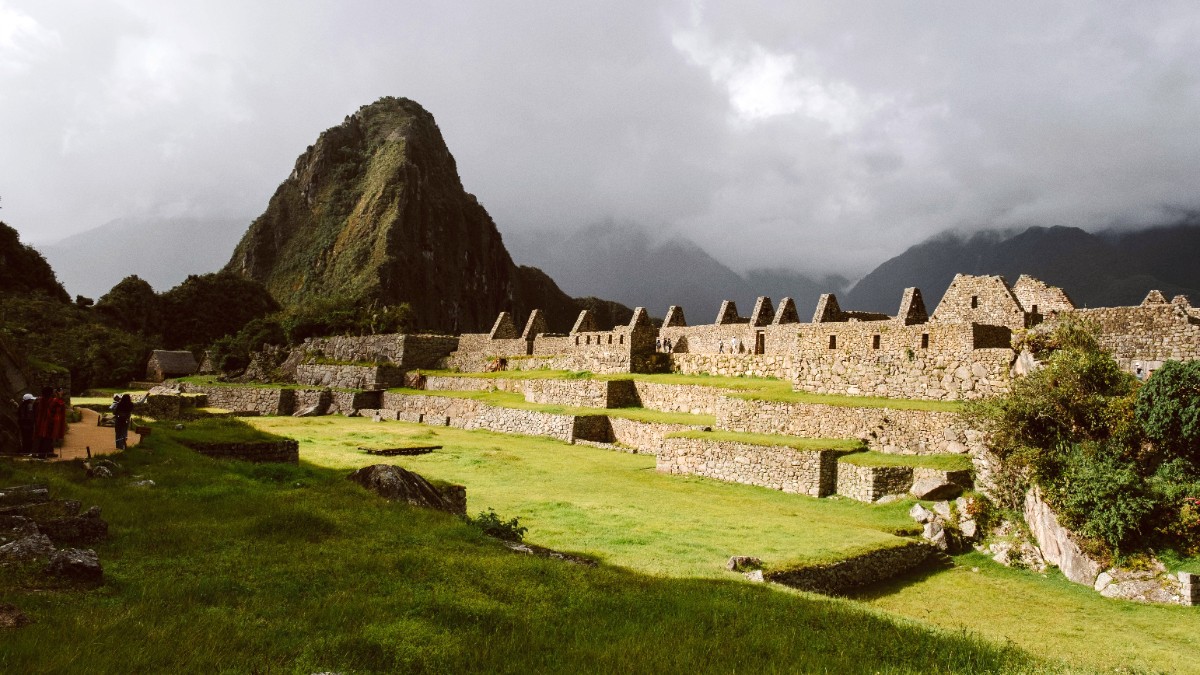
Peru
Machu Picchu's climate, often described as subtropical highland, is influenced by its altitude and proximity to the Amazon basin. Temperatures remain relatively stable throughout the year, but precipitation varies significantly.
This season brings frequent rainfall, especially from January through March. While rain occurs frequently, it often comes in short, heavy bursts, rather than continuous downpours all day. Misty conditions are common, sometimes obscuring views of the ruins, but also creating a mystical atmosphere. Landslides occasionally come during heavy downpours, causing travel delays.
This season brings frequent rainfall, especially from January through March. While rain occurs frequently, it often comes in short, heavy bursts, rather than continuous downpours all day. Misty conditions are common, sometimes obscuring views of the ruins, but also creating a mystical atmosphere.
Landslides occasionally come during heavy downpours, causing travel delays.
Minimal rain, abundant sunshine, clear visibility, ideal for photography and hiking. Highest tourist numbers lead to crowded sites, especially at popular viewpoints and during peak hours.
Clear views, stable trekking. Trails remain dry.
Crowded, higher prices. Permits sell out fast.
Generally good weather with some rain still possible, but fewer crowds compared to the high season. Prices for some services may be slightly lower.
Fewer crowds, lush landscape.
Rain possible, permits still book early.
Fewest crowds, meaning a more serene experience at Machu Picchu and easier access to popular viewpoints. Prices for accommodation and some tours are at their lowest.
Fewer crowds, lower prices.
Frequent rain, muddy trails. Inca Trail closed February.
Beyond general entry, specific activities around Machu Picchu need additional permits or tickets.
Machu Picchu Entry Ticket: This is the base for all visitors. Purchase online or through agencies. Students with ISIC may qualify for discounts.
Recommended for jungle areas, not strictly for Cusco/Machu Picchu. Consult health professional. Hepatitis A and Typhoid are recommended general travel vaccines. Keep multiple copies of your passport, visa (if applicable), and Machu Picchu/Inca Trail tickets. Store them separately from the originals. A digital copy on your phone and in cloud storage provides a helpful backup.
Highly limited permits. Purchase with entry ticket, months ahead.
Required for Classic Inca Trail. Licensed operators obtain permits. Sells out quickly.
Recommended for jungle areas, not strictly for Cusco/Machu Picchu. Consult health professional.
Recommended general travel vaccines.
Keep multiple copies, physical and digital, separate from originals.
Costs vary widely depending on your travel style, from budget-friendly to luxury.
Peru's currency is the Peruvian Sol (PEN), often shown as S/. Exchange foreign currency (US Dollars are widely accepted for exchange) at banks or official "Casas de Cambio" (exchange houses). These typically offer better rates than hotels or airports. Avoid exchanging money with street vendors.
Accommodation, meals, transport, and attractions prices fluctuate based on season and booking time. International flights and major treks are extra.
Tipping customs in Peru differ from some Western countries. Tipping is appreciated but not always expected for every service.
Consult a travel health clinic or your doctor at least 4-6 weeks before your trip. They give personal advice based on your itinerary and medical history.
Ensure all your routine vaccinations are current. This includes measles, mumps, rubella (MMR), diphtheria, tetanus, pertussis (DTP), and polio.
Recommended for most travelers, as they protect against common food and waterborne illnesses.
Consider for travelers with potential animal contact or specific medical activities.
This is the most common health concern for visitors to Cusco (3,400m/11,150ft) and on treks leading to Machu Picchu.
Symptoms include headache, nausea, fatigue, dizziness, and difficulty sleeping. Prevention: Acclimatize gradually. Spend 1-2 full days in Cusco taking it easy before starting any strenuous activities or treks.
Stay hydrated by drinking plenty of water. Avoid alcohol, caffeine, and heavy meals during your first few days. Eat light, frequent meals. Consider a prescription medication like Diamox (Acetazolamide) (consult your doctor before travel). Local remedies include coca leaves (chewed or as mate de coca/coca tea), which some find helpful.
Traveler's Diarrhea is a common issue for travelers globally. Prevention: Drink only bottled or purified water. Avoid tap water, ice made from tap water, and unpeeled fruits or vegetables. Eat hot, cooked food from reputable establishments. Wash your hands frequently with soap and water, or use hand sanitizer. Carry an Over-the-counter anti-diarrhea medication like Imodium A-D.
Cusco offers several private clinics and hospitals that cater to tourists (e.g., Clinica Peruano Suiza, Clinica Pardo). These facilities often have English-speaking staff and provide reasonable care for common ailments or injuries.
Aguas Calientes (Machu Picchu Pueblo) has very limited medical facilities. For anything beyond minor first aid, you would need to return to Cusco.
Police (Policía Nacional): Dial 105. Fire (Bomberos): Dial 116. Ambulance (SAMU): Dial 106. For serious medical emergencies, evacuation to Lima or your home country may be necessary, highlighting the need for travel insurance.
Peru is generally safe for tourists, but petty crime occurs, as in any tourist destination. Peru sits in an active seismic zone.
Travel insurance for any trip to Machu Picchu is highly recommended.
Look for comprehensive medical emergencies, including emergency medical evacuation. Trip cancellation or interruption coverage protects your investment if unforeseen circumstances force changes. Coverage for lost, stolen, or damaged baggage is also useful.
Verify your policy covers high-altitude trekking or other adventure activities you plan, like white water rafting or mountain biking. Some policies exclude these by default.
Consider a policy with a high medical maximum, as medical care abroad can be expensive, especially if evacuation is necessary. Visit World Nomads or SafetyWing for options.